Recent Posts
Where Your Smoke Alarms Should Go
10/9/2023 (Permalink)
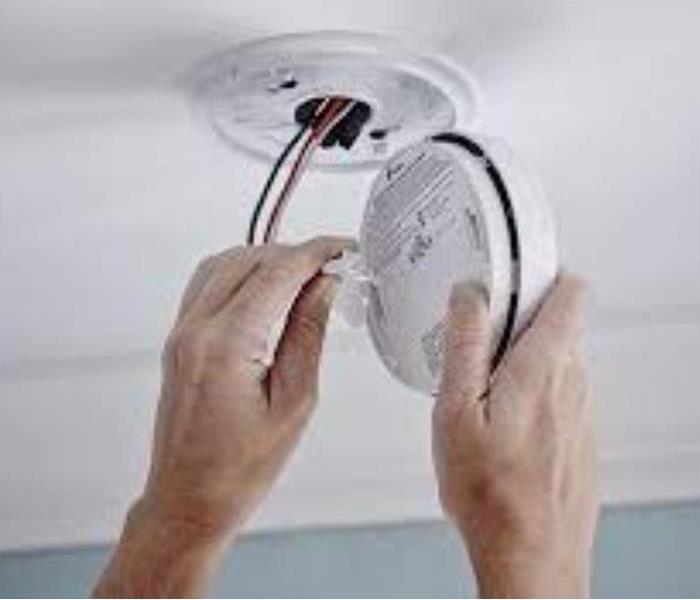 It is vital to know where to place your smoke alarms
It is vital to know where to place your smoke alarms
How Do You Know Which Smoke Detector To Get, and Where It Should Be Placed?
Smoke detection technologies include ionization smoke detection and photoelectric smoke detection.
- Ionization: this smoke detector is especially responsive to flaming fires
How it works: The Ionization smoke alarm has a little bit of radioactive material in-between two electrically-charged plates. These ionize the air while causing a current to flow in between the two plates.
Whenever smoke enters its chamber, it disrupts the flow of ions. This reduces the flow of current, activating the alarm.
- Photoelectric: this smoke detector is very responsive to a fire that begins after a long period of smoldering
How it works: Photoelectric smoke alarms work by aiming a light source into a sensing chamber. The chamber is at an angle, away from the sensor. The moment smoke enters its chamber, it reflects light onto the light sensor. This triggers the alarm.
Most fatal home fires are smoldering fires. The rest are flaming fires. It may be impossible to predict the type of fire you could have. All smoke alarm technology needs to perform acceptably for both types of fires.
Always place a smoke alarm on every floor, and in every sleeping room:
- Inspect every smoke detector once a month, and always change the batteries once a year. Your smoke detector will sense abnormal amounts of smoke - or invisible combustion gases escaping into the air.
- Every detector will detect both smoldering and burning fires. Always place at least one smoke detector on every level of your house. This way no matter what floor it is on - you can locate the nearest extinguisher more quickly.
If you ever have to suffer through the horrible event of a loss for any reason, it’s important to know that the caring professionals at , SERVPRO of Streamwood, Bartlett, West Chicago and Warrenville are there for you.
Risks of Owning a Business in a Floodplain Zone
10/9/2023 (Permalink)
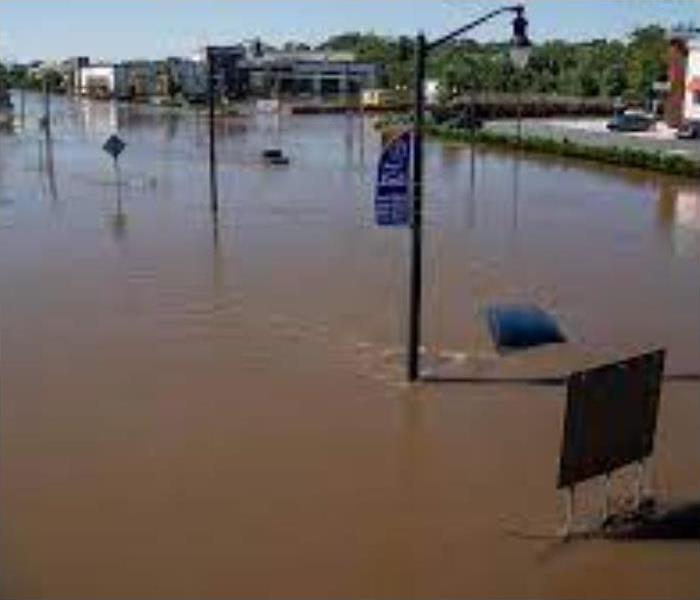 Depending on the location, a floodplain can be a minor component of a landscape or the primary feature.
Depending on the location, a floodplain can be a minor component of a landscape or the primary feature.
Floodplain zones help builders and business owners determine the level of risk associated with building in or inhabiting areas near a waterway (lake, river, stream, creek). Insurance agents use flood maps to identify the zones, which guide them in determining flood insurance requirements and coverage costs.
You can experience a devastating flood event, even if you live in a low-risk zone. Whether you live in a high- or low-risk floodplain zone, purchasing flood insurance is crucial to protect against financial losses resulting from floods, even if not required. Even a couple of inches of water can lead to several thousand or tens of thousands of dollars of damage.
If you choose to have your business in a floodplain zone, there are some important considerations to make:
- Purchase appropriate flood insurance (even if you aren’t required to by law).
- Use flood-resistant building materials in the home, such as laying tile instead of carpet, especially in the basement.
- Install flood vents, which allow the waters to flow through the vents and drain out.
- Elevate your property so the lowest floor is higher than the flood elevation level as identified on the flood map.
- Store belongings that would be adversely affected by water in a high location or a waterproof box to keep them safe from floodwaters.
- Have a plan in place for water damage restoration that you can utilize immediately following a flood event. Addressing water damage right away (within 24-48 hours) minimizes damage and avoids common post-flood problems like mold growth.
My Washing Machine Flooded the House
10/6/2023 (Permalink)
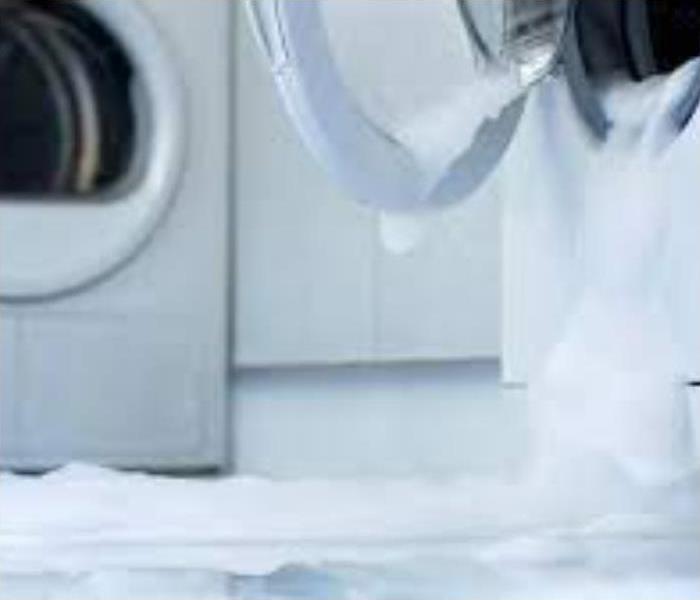 Flooding from a washing machine can leave your home with severe damage
Flooding from a washing machine can leave your home with severe damage
There are suds on the floor and water everywhere. The feeling of coming home to find the washing machine flooded the carpet is one of the worst. Not only are there dangers of electric shock and slipping on the sudsy floor, but after it’s all done, the water damage can continue to harm your home with mold and rot. Here’s what to do in the event of washing machine flooding, and how to avoid it next time.
What to Do When There’s a Washing Machine Flood
If your washing machine flooded, or is currently in the process, it’s important to act immediately to minimize the water damage:
Close the main water supply to keep the water from pouring.
Turn off the electrical breaker before unplugging the washer.
If the leak seems to be coming from the plumbing connections to the washer, call an experienced plumber. If it seems to come from the washer itself, call an appliance repair expert.
Call 24/7 water damage restoration expert, such as SERVPRO of Streamwood, Bartlett, West chicago and Warrenville. We can thoroughly dry out the room with our specialized equipment and processes, and we’ll inspect structures and surfaces to recommend ways to prevent hidden degradation and mold growth.
Protect your nearby belongings. Tie up curtains, put aluminum foil under furniture legs, and remove all books, clothes, shoes, and other items that could be stained.
Call your insurance company. Your policy likely requires you to report the damage and losses as soon as you possibly can.
The speed of your response is key in this situation. It only takes 24 hours for mold to develop in wet carpet or damp drywall. Soaked carpet may need replacing, and wooden floors warp and rot after extended water saturation. Even tile flooring can become loose and develop mold or rot in the subfloor.
Why Is My Washing Machine Flooding?
It’s essential that you find out so you can prevent another flood. Your washing machine may be flooding for these common reasons:
Too much detergent, especially if you have soft water
Overloaded washing machine (more than 2/3 full)
Faulty inlet or outlet hose
Faulty valve
Plumbing failure
Why Is My Washing Machine Leaking?
Perhaps your washer hasn’t flooded but you notice a little bit of water on the floor. Here are some common reasons your washer might be leaking:
Lint-clogged floor drain
Damaged or kinked external water supply hose
Internal hose or drain pump
Weak door seals (if a front-loading unit is leaking from the front)
Loose hose connections
Biohazard Cleanup for Hospitality, Commercial, Industrial, and Rental Property Owners
10/7/2022 (Permalink)
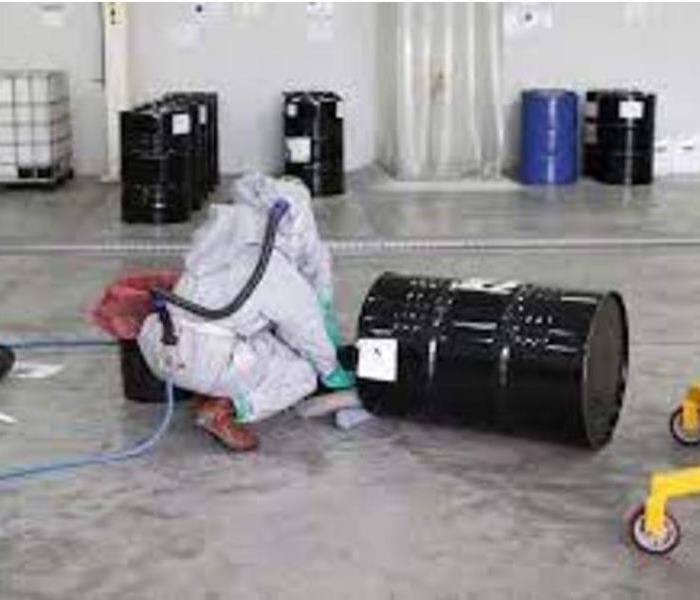 A biohazard is any biological substance that poses a threat to the health of all living organisms
A biohazard is any biological substance that poses a threat to the health of all living organisms
Why SERVPRO for Biohazard Cleanup?
Commercial biohazard clean up is challenging work and should be left to the SERVPRO of Streamwood, Bartlett, West Chicago and Warrenville. However, if you have a biohazard situation at hand, you must get in touch with a biohazard cleaning company as soon as possible. The more you wait, the higher are the chances of you and your employees being exposed to biohazards.
When many businesses come face-to-face with biohazard situations, they try to stage a cover-up by employing amateur cleaning techniques. Unfortunately, this could prove to be a very costly mistake. Not only can employees get exposed to hazardous materials, but the business can also get a bad rap.
Cleanup work requires special training and expertise. Anyone who handles biohazards is at high risk of exposure to hazardous materials. Biohazard cleanup specialists are trained to handle and dispose of biohazards safely.
If someone committed suicide or was murdered at your facility, you are responsible for cleaning or decontaminating the scene. If the crime scene cleanup is not your forte and your employees are not mentally or emotionally equipped to handle crime scene cleanup, you should hire a biohazard cleanup specialist.
A biohazard cleanup specialist is qualified to handle such cleanup and eliminate all sensory reminders of the unfortunate event.
Biohazard Cleanup Process
? Once the expert arrives at your facility, they might seal the area to reduce contamination risks.
? They will put on safety gear and prepare disinfectant.
? Then, using tongs or forceps, the team will remove any sharp objects such as broken glass, metal shards, medical sharps, or razor blades.
? They will then cover the spill area with absorbent material.
? Next, the team will remove the absorbent material, place it in the biohazard bag, and apply an EPA registered disinfectant to the contaminated area.
? The disinfectant should be allowed to sit for a few hours. Using paper towels, the team will then remove disinfectant and place the paper towels in a biohazard bag.
? They will then place the biohazard bag in a biohazardous waste container for treatment and disposal.
What SERVPRO Does To Perform Outstanding Cleanup Services
10/7/2022 (Permalink)
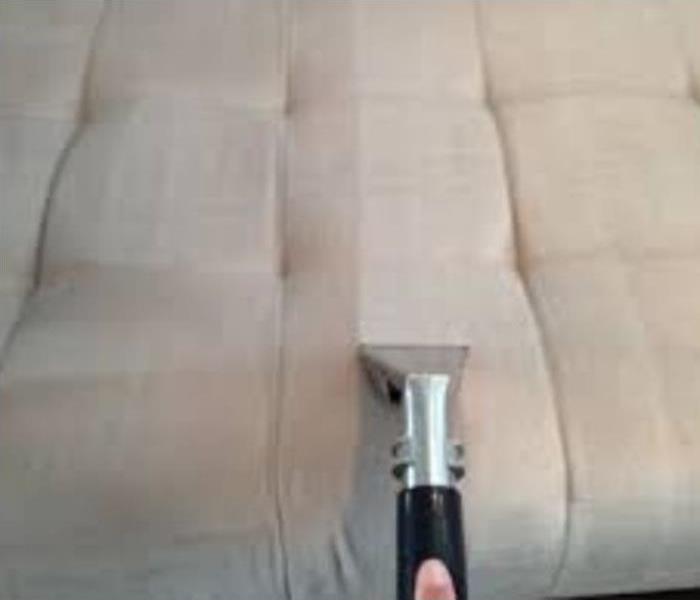 Water and fire damage are the two most common types of damage.
Water and fire damage are the two most common types of damage.
SERVPRO of Streamwood, Bartlett, West Chicago, and Warrenville is a 24/7 emergency remediation service company . Water and fire damage are the two most common types of damage. Our goal is to dry wet areas, remove dangerous particles from the air, and clean a home that’s been affected by almost any type of damage - vandalism, biohazard, and mold included. There are many pieces of specialized equipment and tools we use to be very effective with our work.
Air movers are used for drying and ventilation. Water can penetrate surfaces, leaving them to crumble and rot. Sometimes, towels are not enough.
A dehumidifier, commonly called a dehu, is incredibly valuable for any home affected by water damage. Dehumidifiers remove water and moisture from the air, as well as carpet and flooring.
Air scrubbers actually remove smoke, dust and pollutants from indoor air as well as surfaces by using negative ions. Because smoke and odor permeates furniture, walls and appliances, having this device greatly supports the restoration process.
UV air scrubbers use UV light technology to capture air and pass it through a filter. This process removes bacteria, mold spores and viruses.
HEPA vacuums not only remove pollen, dirt, mold and other particles from the air, but they trap them with filters. Traditional industrial and household vacuums do not necessarily trap all the particles they pick up from surfaces.
Hard suction is used to remove water in unpressurized surfaces. When a home is flooded with standing water, we would use this technology to quickly remove it.
Water extractors do exactly as they say; they extract water from your home. Often, carpet is so saturated that fans can’t do all the work themselves.
Ozone neutralizes the smoke odor using hydrogen atoms and is typically used for content cleaning. Because oxygen is added to the air, leaving the home or building while the ozone machine is being used is absolutely required. Oxidized air can burn organic material and cause bleaching, which is harmful to people.
Hydroxyls use UV light to remove odors, volatile organic compounds (VOCs), virus particles, and bacteria particles from the air. The hydroxyl works by detaching hydrogen atoms, which disassembles the molecular structure of odors.
A moisture reader lets us know exactly how much water is saturating a material so we know how much dry time and force to apply. Too much drying can lead to bending, breaking or further damaging flooring and wood beams.
Thermal foggers apply a deodorizer to surfaces to reduce the odor in a specific area, typically smoke. Because the solutions used in the fogger leave very small droplets in the air, it’s able to penetrate difficult to reach surfaces.
Thermal image readers let us know the temperature differences in areas of a home or business. By learning this information, we can know more about what areas are affected by water damage. We are able to get an area dry much faster, which prevents more damage from happening.
Besides these tools, SERVPRO of Streamwood, Bartlett, West Chicago, and Warrenville also uses standard construction materials and tools, large trucks, personal protective equipment such as disposable suits and gloves, special face masks, plastic sheeting, generators for times when there’s no access to electricity, and so much more.
Tips to Pump Water Out of a Basement
10/6/2022 (Permalink)
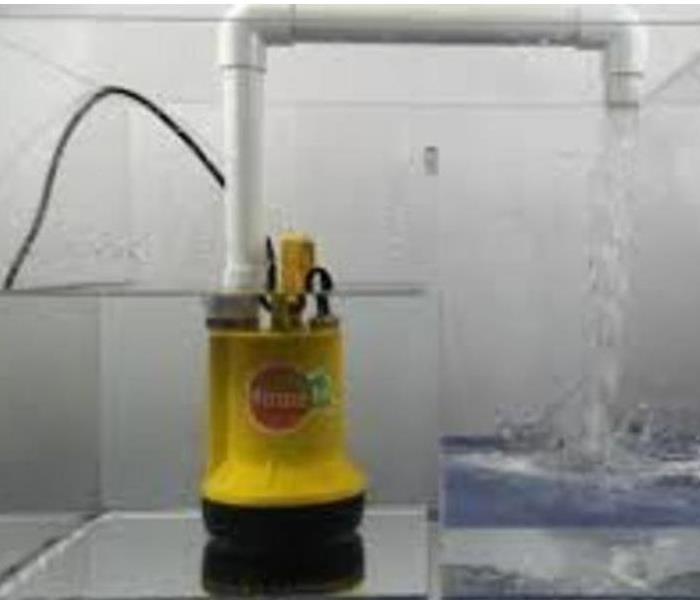 Here are some tips to Pump Water Out of a Basement
Here are some tips to Pump Water Out of a Basement
Pumping out the basement isn’t difficult, but there are safety considerations.
- Before Pumping Flood Water. Wait until exterior floodwaters recede. If water is standing in your yard around your home’s foundation, it’s too soon to pump. Shut off electricity to the house if it’s still on. Keep children and animals away from the basement. A submersible pump is necessary for removing the water. The pump is encased in a waterproof shell and features a sealed electrical cord and a fitting that connects to a regular garden hose or a sump hose, which is larger in diameter. The larger the hose, the more quickly the pump will remove the water. In addition to the pump and a hose, you’ll need a heavy-duty extension cord and a generator to run the pump. A nylon rope is necessary for lowering the pump if the water is more than a few feet deep.
- Setting Up the Pump. Attach the extension cord to the pump cord before putting the pump in the basement. Secure the connection where no water can reach it by looping the cords around a ceiling joist or another heavy object that will hold the connection where it won’t get wet. Attach a garden hose or a sump hose to the fitting on the top of the pump and tie a nylon rope to the top of the pump. Most pumps have a place on top of the pump where you can tie the rope. Position the end of the hose away from the house on a grade where the water can drain into a gutter or storm sewer.
- Pumping Out the Water. Lower the pump into the basement, using the rope. If you’ve only got few inches of standing water, you can wear rubber boots and position the pump on the floor at the lowest spot. Once the pump is in place, start the generator and plug the extension cord into the generator. This will start the pump. You can speed the removal process by running two or more pumps at the same time. Once the water level is down to a few inches, position the pump at the lowest level in the basement to remove all the water.
- Wet/Dry Vacuum for Small Problems. If the water problem is limited to a small area and is less than 1-inch deep, you might be able to pump out the water with a wet/dry vacuum. Wet/dry vacuums work well, but they draw the water into a tank, which holds about 4 to 5 gallons of water. Each time the tank is full, you must carry it upstairs or to a basement drain and dump it. For anything more than very small water problems, this can quickly become labor-intensive.
- Dry-Out Considerations. The general rule is that you should replace anything porous if it was saturated with water to prevent the risk of mold growth. This includes drywall paneling and carpeting.
Does My Insurance Policy Cover Fire Damage?
10/6/2022 (Permalink)
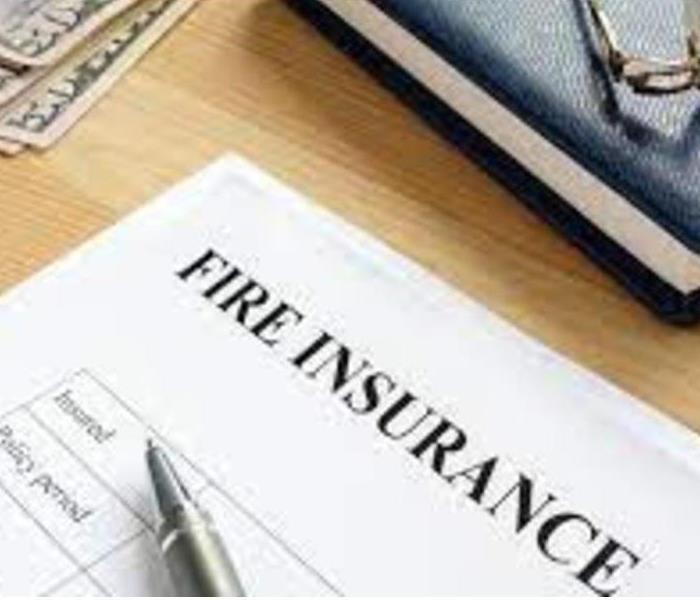 Most policies include coverages that may help pay to repair or replace your home and its contents if they are damaged by fire.
Most policies include coverages that may help pay to repair or replace your home and its contents if they are damaged by fire.
Types of CoverageYour homeowners insurance will pay for fire damage to your home including damage to your property, the contents of the building and additional living expenses if you need to stay elsewhere while repairs are made to your home. Additional living expenses (ALE) is a great coverage option to have. It covers hotel bills, food, meals and other living expenses you may have while unable to live in your home. Without the coverage, many families would have a hard time paying for living expenses if they were forced to find temporary living arrangements after a home fire.
Any detached structures located on your property such as any sheds, fences or detached garages are also covered by most homeowners insurance policies. Some policies will also help pay for landscaping costs such as damage to trees and shrubs.
One important note—if your car or other vehicle is destroyed or damaged due to a fire at your home, this is not covered by homeowners insurance. The cost of fire damage to your car is paid for by the comprehensive portion of your auto policy. If you only have liability auto coverage, damage to your car during a home fire is not covered.
HOW many HOMEOWNERS INSURANCE COVERAGE DO I NEED FOR FIRES?
There is no one-size-fits-all formula when it comes to choosing your coverage limits. Your limit is the maximum your policy will reimburse you after a covered loss. You can set your coverage limits based on factors such as the value of your home and belongings. Here are some things to consider when choosing coverage limits:
Choosing Your Personal Property Coverage Limit
If you think you may need more coverage to replace your belongings in the event that they are damaged by fire, you may want to increase your limits for personal property. Keep in mind that your policy may offer lower coverage limits for certain items, such as jewelry. You may want to consider purchasing additional coverage to help protect those items.
You should also review your policy to find out if it offers actual cash value or replacement cost coverage. Actual cash value coverage generally helps reimburse you for the depreciated value of damaged items, while replacement cost value coverage typically helps pay to purchase a new item at today’s price.
Choosing Your Limit for Dwelling Coverage
The cost of rebuilding after a fire may not be equal to the price you paid for your home, as construction costs and home values fluctuate.
FIRE DAMAGE THAT HOMEOWNERS INSURANCE MAY NOT COVER
Homeowners insurance may not cover all types of fire damage. For instance, if you intentionally start a fire in your home, you’ll generally find homeowners insurance will not pay to repair the damage. Homeowners insurance also typically does not cover damage caused by an act of war. Read your policy or contact your local agent to learn what risks are excluded from your coverage.
Having smoke detectors and fire extinguishers in your home is certainly a smart way to help protect yourself from fire. But, if a fire damages your home or property, homeowners insurance may help you and your family recover financially.
Commercial Water Damage Restoration
10/4/2022 (Permalink)
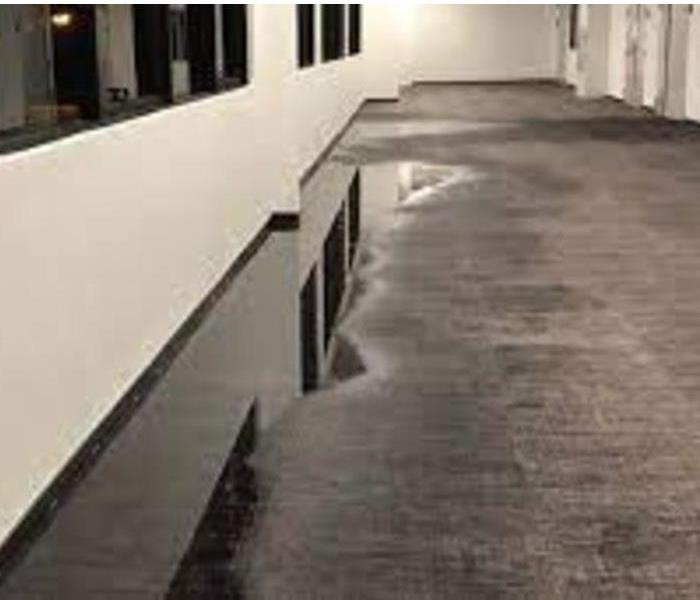 Having a business in a place that constantly experiences flooding and other related issues can be frustrating
Having a business in a place that constantly experiences flooding and other related issues can be frustrating
Commercial Water Damage Restoration
It is impossible to predict when your business premises will be affected by water damage. However, it helps to be prepared while dealing with excess water in your area.
Sometimes, you’re only dealing with small amounts of water on the property. Generally, this can be handled by the cleaning staff. However, when there is an excess amount of water, you need to call in SERVPRO of Streamwood, Bartlett, West Chicago and Warrenville.
It is crucial to act immediately in such situations, as it can minimize any further damage that may occur. For instance, if the water stays in your business property for up to 48 hours, it can start developing mold. This will then become a separate issue that needs to be solved.
When you call SERVPRO of Streamwood, Bartlett, West Chicago and Warrenville, the highly-trained technicians arrive at the site and start working on restoring the water damage immediately. Not only would they have the proper equipment for water damage restoration, but they would also develop a plan according to the severity of the impact on your property.
After removing the water, they will also ensure that your business property is thoroughly dried and sanitized, preventing the chance for any mold to grow. If there is any physical damage to the property, they will try their best to repair it.
So if you’ve been affected by water damage due to excess water on your property, call SERVPRO of Streamwood, Bartlett, West Chicago and Warrenville immediately.
Ways to Treat Residential Water Damage
10/4/2022 (Permalink)
Water damage can lead to severe structural changes and can also cause serious health and safety issues, so you must be able to treat current and prevent future damages caused by water.
Here are some effectual ways to deal with residential water damage successfully.
Mold Inspection
Water brings with it a great amount of moisture, and it is a known fact that moist and damp places serve as breeding grounds for mold and bacteria. It is possible that after a flood or leaking pipes in your home, you might have to deal with a mold problem. So, one of the first important things to do is inspect your entire house for mold spores and other signs of mildew. In case you do come across serious mold infestation, get immediate help from a mold removal service in order to prevent it from expanding its growth.
Dry Out Affected Areas
It is extremely vital to get rid of all the moisture from your home by drying out the affected areas as soon as you can. This is to prevent any further structural damage or the growth of mold and fungus. But this greatly depends on the extremity of the water damage. For instance, if you’re dealing with small leaks from broken pipes, you can place portable fans in the affected area to dry them out. However, if the damage is quite extensive, perhaps due to heavy rainfall, you might want to consider renting a large-sized humidifier to thoroughly dry out wet or damp areas. Another option is to SERVPRO of Streamwood, Bartlett, West Chicago and Warrenville.
Remove Damaged Items
Residential water damage greatly affects porous materials, which include carpets, sofa fabrics, and other similar items. In case of serious water damage, all these things in your home are likely to be destroyed due to being soaked in water. It is best to remove them and get rid of them in order to prevent other problems from occurring. Water tends to permanently destroy porous materials, and if drying them out is not an option, consider disposing of them entirely.
Pump Away Standing Water
If there are big puddles of standing water inside your home, use a sump pump to remove all the water and pump it outdoors. This is a kind of a submersible pump that moves water in a continuous manner with the help of a pipe or hose. You can either rent a sump pump for a few hours or buy one if there’s a lot of standing water inside your home.
Fire Damage Restoration Tips
10/4/2022 (Permalink)
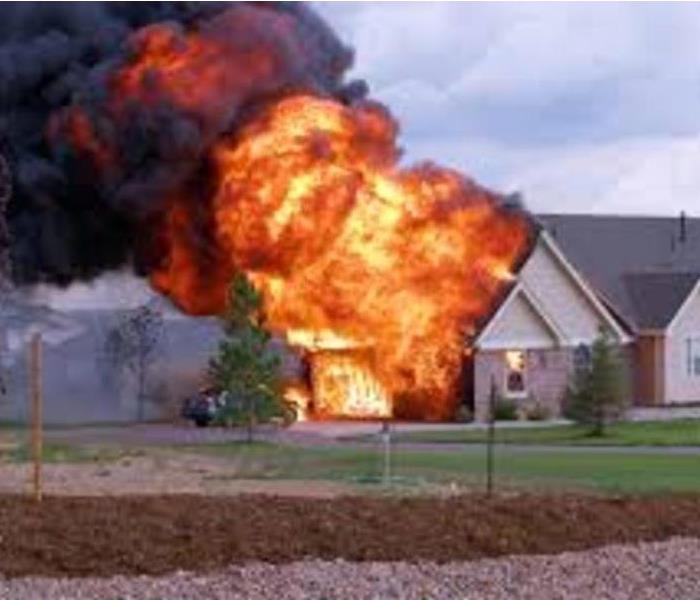 A house fire can lead to immense damage.
A house fire can lead to immense damage.
A house fire can lead to immense damage, both financial and emotional. It can take a while to recover from all the damage that you may experience due to a house fire. Not only is there irreversible damage to your property structure and material possessions, but you might also lose keepsakes and relics that you hold dear to your heart.
However, it is important to stay vigilant in case you encounter a house fire. We understand how devastating the experience may be, but taking the right steps immediately after the disaster can prevent further loss.
If you are encountering a house fire, the following are some tips you should follow.
– The most important thing you need to do in case of a house fire is to get yourself and any house members to safety. Being stuck in a house fire can be life-threatening. So no matter what, the first thing is to make sure everyone is safe.
– As soon as you are in a safe place, call 911. They will send over the essential help required to control the fire.
– Once the fire has settled down, retrieve any belongings that may have survived. However, make sure to be wary of the toxic chemicals that may be among the soot. You may want to have someone from the fire department assist you while you go inside the house.
– If you have house insurance, inform your insurance company about the house fire. If you don’t have insurance yet, you may want to consider getting one as soon as possible.
– Let your electricity, gas, and other utility companies know about the fire and have the utilities temporarily turned off.
House fires can be devastating, and you may have the instinct to run inside and save all your valuables. However, do not enter the house until it is deemed safe by the firemen.





 24/7 Emergency Service
24/7 Emergency Service








